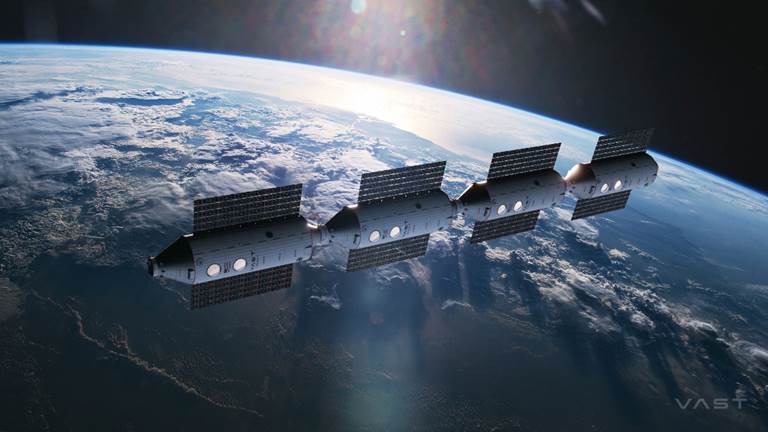The retirement of the Worldwide House Station (ISS) is deliberate for 2030. With simply six years left on the clock, non-public firms are vying to see their area stations attain low-Earth orbit and grow to be the world’s first-ever industrial orbital laboratory.
On the seventy fifth Worldwide Astronautical Congress (IAC) held in Milan, Italy, on Monday (Oct. 14), U.S.-based area habitation know-how firm Huge threw its hat within the ring. The corporate’s CEO, Max Haot, unveiled Haven-2 as a proposed successor to the ISS. In an accompanying press assertion, Huge describes the non-public area station Haven-2 because the “subsequent step within the firm’s imaginative and prescient to pioneer a path to long-term residing and thriving in area.”
“Our focus this decade is to win the NASA Industrial LEO Vacation spot (CLD) contract and construct the successor to the Worldwide House Station,“ Haot stated in a assertion. “To realize this, we are going to first reveal {our capability} by constructing and working the world’s first industrial area station, Haven-1, which is about to launch in 2025.”
Huge has developed Haven-2, a NASA-certified model of Haven-1, to be modular, enabling it to be progressively constructed in low-Earth orbit, identical to its predecessor, the ISS.
If Haven-2 wins the profitable NASA CLD contract in 2026, the corporate tasks that the primary Haven-2 module might attain low-earth orbit and grow to be absolutely operational by 2028.
Associated: US area science might fall behind China if non-public successors to ISS are delayed, Congress warns
Haven-2: Beginning off small
Following the deployment of this 16-foot-long preliminary unit, Huge stated it could construct three extra modules and launch them inside a two-year interval between 2030 and 2032. Every subsequent module won’t solely broaden the industrial area station’s quantity but in addition enhance Haven-2’s life help applied sciences and payload capabilities.
Haven-2 could also be a industrial endeavor, however it’s being based with the potential for future worldwide collaboration in thoughts. Collaboration has been one thing that has been very important within the success of the ISS.
“Haven-2 is being designed with compatibility in thoughts, making certain that worldwide companions can combine seamlessly into this next-generation platform,” Huge advisor and 23-year veteran NASA astronaut Andrew Feustel stated within the assertion. “This imaginative and prescient of world cooperation in area will create alternatives for scientific and technological developments, benefiting new and present sovereign companions in addition to industries all over the world.”
One of many key roles of the ISS over its now dwindling lifetime has been to permit scientists to conduct numerous experiments within the low-gravity or “microgravity” surroundings of low-Earth orbit. Haven-2 will intention to satisfy this position with its lab module, which Huge stated will supply state-of-the-art laboratory services to help a variety of microgravity analysis and in-space manufacturing assembly with NASA’s Primary Laboratory Capabilities standards.
When Haven-2 is accomplished, Huge stated that a few of its different key options will embrace a 41-foot-wide (12.5-meter) cupola window, permitting non-public and area company astronauts to view Earth and area and seize beautiful photographs. Every module can even have its personal 3.6 feet-wide (1.1-meter) home windows, bringing the overall variety of Haven-2 viewing ports as much as 16.

On its exterior, Haven-2’s payload internet hosting capabilities will embrace a robotic arm, visiting car berthing capabilities, exterior payload airlock, and an extravehicular exercise airlock for these spacewalks which have supplied a lot drama and marvel in the course of the lifetime of the ISS.
“Huge’s design is projected to surpass all different proposed on-orbit area stations by way of quantity, performance, and operational effectivity,” the corporate concluded within the assertion. “With unparalleled capabilities, Haven-2 would be the benchmark for next-generation area stations, low-earth orbit economic system.”





